Are you ready to beat the heat? So are we. When central air conditioning is not an option, get the best window air conditioner instead. This is an energy-efficient and inexpensive alternative for keeping your rooms cool.
Choose a window air conditioner with less noise, has easily accessible filter, has intelligent cooling, and that comes with longer warranties. To get the most out of your AC, make sure it’s properly installed at the proper location.
Window Air Conditioner Reviews
Frigidaire FFRA1022R1
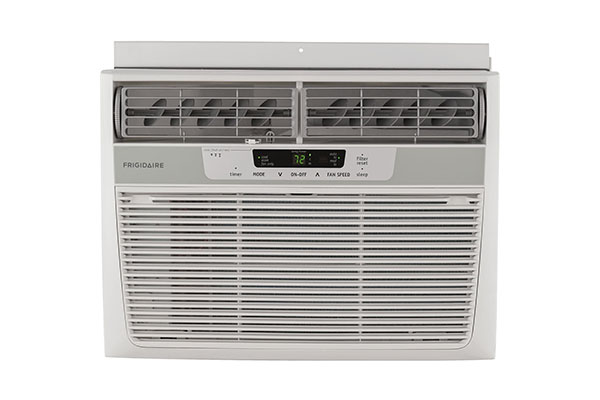
This window air conditioner from Frigidaire comes with various energy efficient modes including: auto cool, sleep mode, exhaust control and fresh air vent. It also provides 8-way air directionto deliver its refreshing cool to any space.
>>>> Click Here To See Customer Reviews & Current Price <<<<
Koldfront 115v Air Window Conditioner
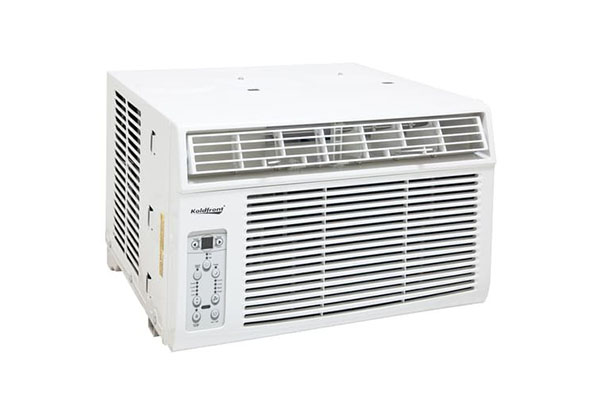
Energy star rated, the Koldfront window air conditioner comes with three different fan speeds and three different modes. It has a cooling capacity of 8,000 BTU’s and features four-way air directional louvers.
>>>> Click Here To See Customer Reviews & Current Price <<<<
LG 115v Window Air Conditioner
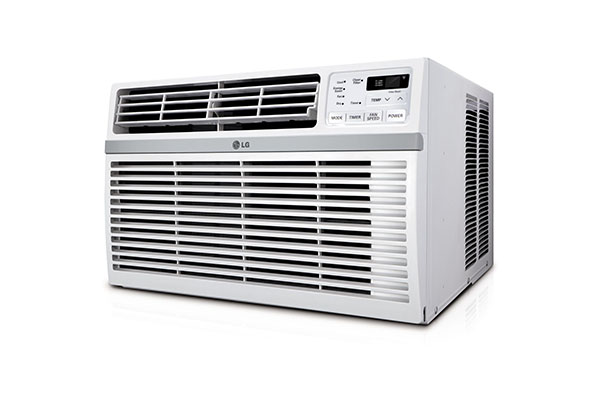
This AC from LG is capable of dehumidification for up to 2.2 pints an hour. It also got three different cooling and fan speeds. At 8,000 BTUs, it can cool rooms up to 340 sq. ft. in size.
>>>> Click Here To See Customer Reviews & Current Price <<<<
Haier ESA410N Window Air Conditioner

The ESA410N from Haier is capable of dehumidifying the air.It features four different modes including energy saver and fan. At 10,000 BTUs, it is capable of keeping rooms up to 450 sq. ft. comfortably cool.
>>>> Click Here To See Customer Reviews & Current Price <<<<
Haier ES405P Air Conditioner
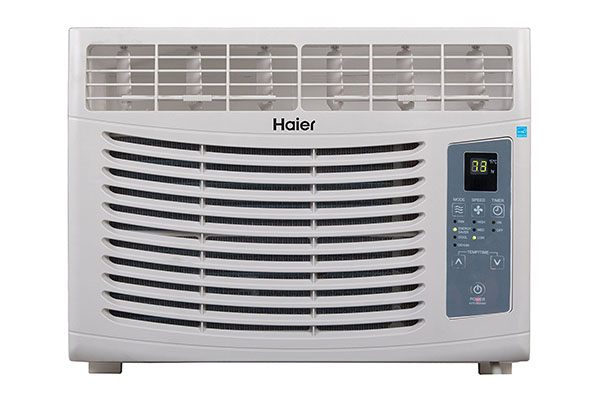
The Haier ES405P is certified as energy efficient. It is easy to install and more compact in size.This window AC can cool rooms up to 150 sq. ft. in size.
>>>> Click Here To See Customer Reviews & Current Price <<<<
SPT WA-1222S Energy Star

The WA-1222S from SPT comes with three different fan speeds, including energy saver and sleep mode. It also features a top discharge, ensuring fresh air circulation and odor removal. It is also energy efficient.
>>>> Click Here To See Customer Reviews & Current Price <<<<
Keystone KSTAW05B
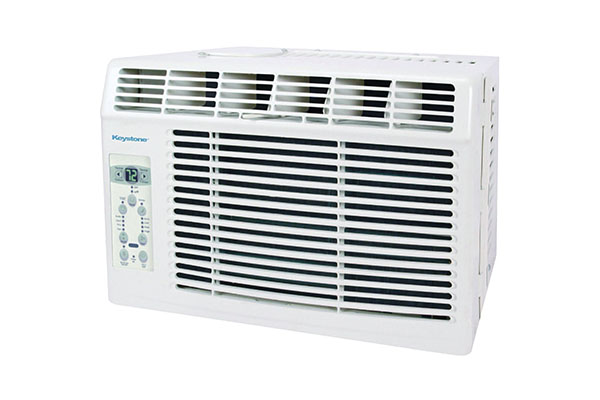
The Keystone KSTAW05B is a 115 volts and 5,000 BTU AC. It can both dehumidify and cool a 150 square feet room. It has 3 speeds for its fan and cooling with 2-way adjustable air flow.
>>>> Click Here To See Customer Reviews & Current Price <<<<
LG LW8015ER
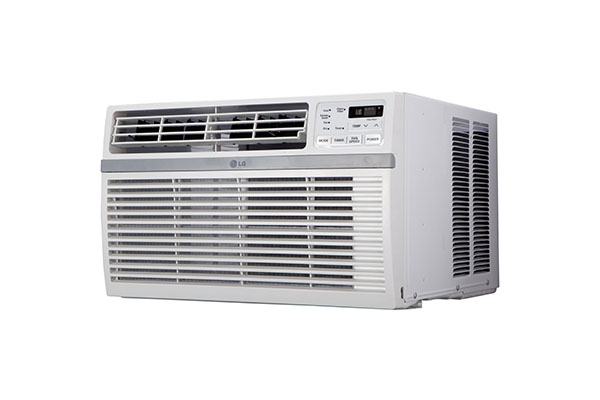
The LW8015ER AC from LG has an anti-corrosion coating for durability. It is energy saver and the mesh filter is easy to clean. It can easily cool a 340 sq. ft. room.
>>>> Click Here To See Customer Reviews & Current Price <<<<
Frigidaire FFRE0633Q1
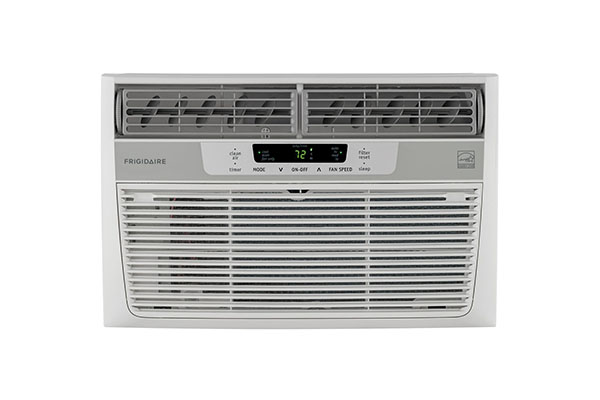
The Frigidaire FFRE0633Q1 is good for allergy sufferers because of its clean air ionizer. It operates quietly and cools a room quickly – 250 sq. ft. It has multi-speed fan and 8-way air flow control.
>>>> Click Here To See Customer Reviews & Current Price <<<<
GE AEM08LV

This GE AEM08LV is Energy Star qualified with three speeds both for fan and cooling. Its thermostat is digital and you can remotely control its temperature. Its cooling capacity is 8,000 BTU.
>>> Click Here To See Customer Reviews & Current Price <<<<
How to Select the Best Window Air Conditioner
Contemporary window air conditioners are properly designed to operate quietly. The best window air conditioner can do the job of efficiently cooling enclosed rooms or spaces.
When choosing the best window air conditioner, choose the model that is appropriate for your room. It should also handle the cooling job reliably, efficiently, and affordably.
Room air conditioners operate more efficiently. That is, if you only want to cool a room or two. Window air conditioners are sensible if you are renting property, or you don’t want to spend money for a centralized system.
There are three types of air conditioners for the room including: portable, wall-mounted, and window. The window units are more popular than the other two. They can be installed in most double- or single-hung windows.
They also have accordion panels that ensure a secure installation. There are also window units meant to fit sliding windows. Installing the best window air conditioner is easy, and can be a DIY project.
Before buying your window unit, ensure that your electrical system can take care of the unit’s power needs. Also, consider your room’s layout. Locate the unit to direct cool air where you need it.
Advantages of Having a Window Air Conditioner
Many U.S. households have window air conditioners, and the number of users are steadily increasing. Some of the advantages of having a window air conditioner include:
Efficiency: Many window air conditioners contain digital controls (variable) instead of the usual ‘low’ and ‘high’ settings of older models. Units having energy-saving switches help to curb utility costs.
Availability: Window air conditioners are widely sold at home improvement stores and at big supermarket chain stores. Even pharmacies and department stores carry them. They can also be bought online.
Easy Hook-Up: After installation, plug the unit into a convenience outlet, while there are others that need electrical improvements. Smaller units can be plugged into a conventional receptacle that is not shared with various appliances.
Larger air conditioners, on the other hand, need a dedicated circuit. The largest A/C models require a 230V circuit. Take such needs into consideration when you choose a unit.
Easy Installation: When you buy a window air conditioner, you may also get an easy-to-follow installation kit. Portable units that are free-standing need minor setup and can be transferred from one room to another.
How to Maintain Your Window Air Conditioner
The window air conditioner offers a convenient and efficient way to cool a room at home. Keeping your unit in good running order may reduce energy consumption and improve efficiency.
Clean the filter regularly. Do this monthly by accessing the filter through its front panel. Clean the filter with a dish soap-white vinegar-water combination. Before reinstalling the filter, dry it thoroughly.
Check for animal/insect nests. An uncovered unit should be checked for bees and wasps’ nests. During the off season, store your air conditioner in a closed area like a utility room or basement.
Keep the water pan clean. Do this to prevent mold growth and musty odors. To clean the pan, use white vinegar or dish detergent and warm water. Do this whenever your unit is taken apart to clean the coils.
Find a good location. Leaving your units exposed during winters can lead to increased energy use and drafts. During winters, store the units in a utility room, basement, or attic.
Check coils for ice or frost buildup. If the area outside the air conditioned room is cool, check the coils in front of the unit for frost. When there’s ice, the temperature is low for optimal operation.
Frequently Asked Questions about Window Air Conditioners
How does the air conditioner work? They run on the principles that dictate how a dehumidifier or refrigerator works. The cooling system refrigerating air to the unit expels heat from the rear.
Can a window unit run continuously? If your unit is continuously running, it’s working hard to compensate the set temperature. Check the room’s temperature, and also check the temperature of the expelled air. There should be a 15 degree difference.
Do window units influence the humidity level? Window units can eliminate air humidity. The coils (evaporator) in the unit’s front grow cold during operation. The warm air it encounters condenses and sticks to the coil.
How can the unit’s efficiency be improved? To maximize the unit’s use, it should not be positioned near windows that get direct sunlight. To save energy, use ceiling fans at night.
What happens if I don’t use the correct size? A small unit in a larger room can cause the unit to work harder. An oversized unit, conversely, will rapidly cycle and may not work long to remove air humidity.
Can the air conditioner run year round? As often as you need, you can run the unit. That is, if both the inside and outside temperatures are over 15 degrees. If below, the unit may not work properly.